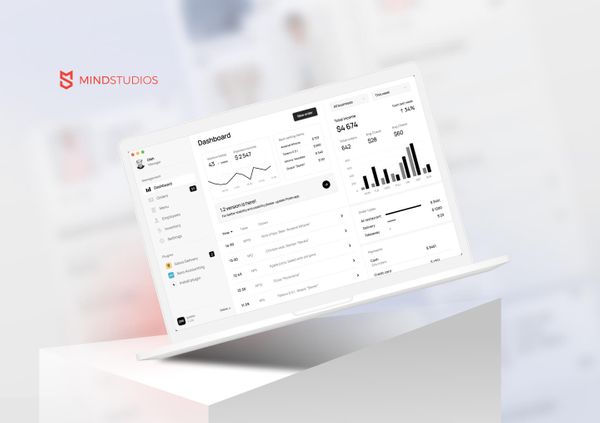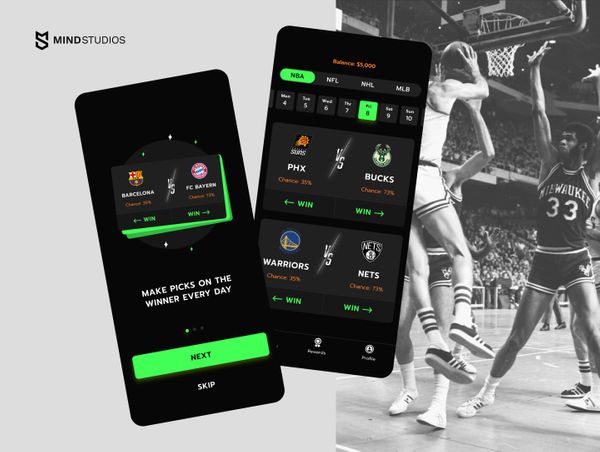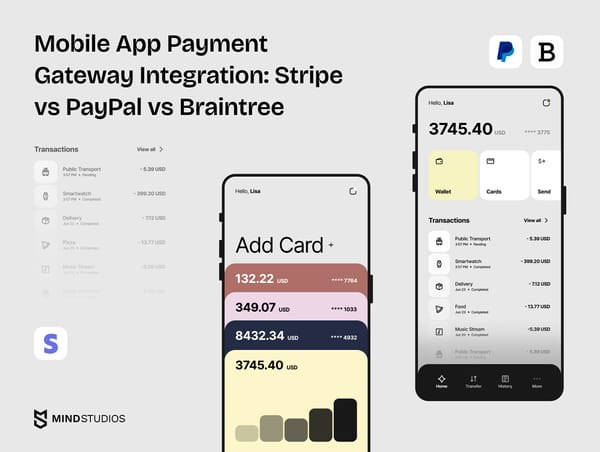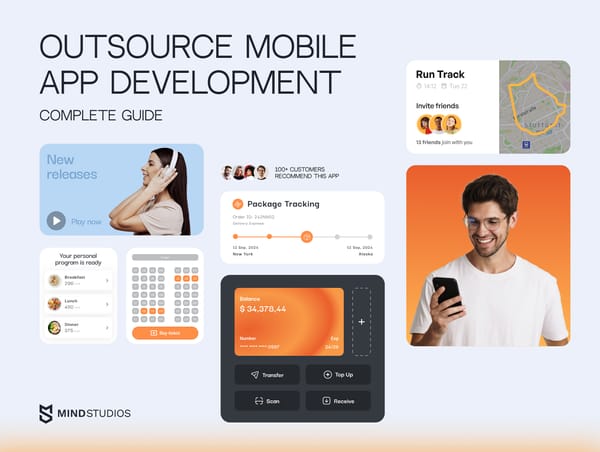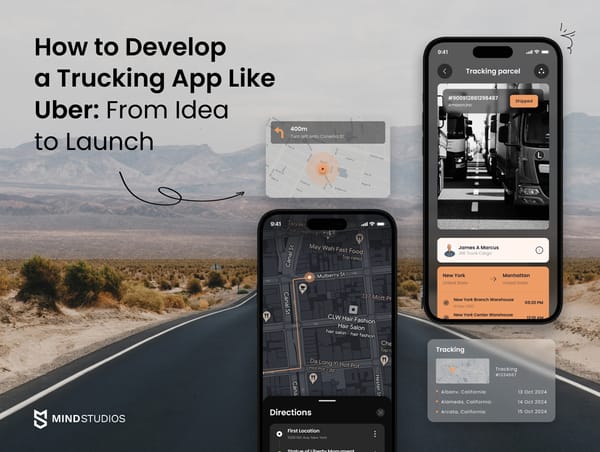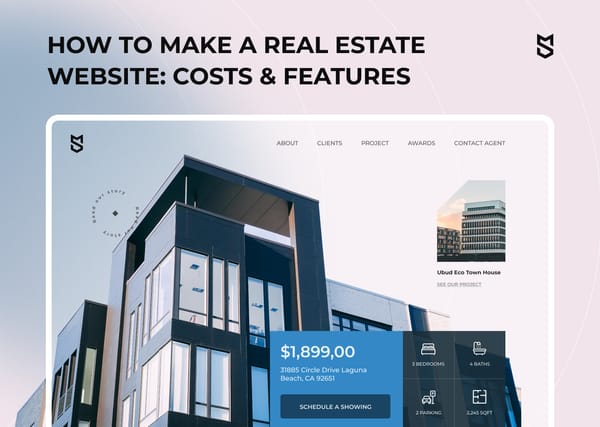What is an app business plan, and why does every project need one?
The foundation of every business is an idea or a flash of inspiration. A simple idea or a conversation with a potential business partner could be the spark that sets everything in motion. It is essential to assess your real opportunities, regardless of how appealing an idea may be. For that, you should create a business plan before you consider launching a new business.
A company's business plan is like a roadmap. If you have a strategy in place, you can more easily lead your company to its desired destination. Whether you have been in business for years or are just starting out, a business plan is necessary for long-term success.
We at Mind Studios have been in the software development business for a while, and creating a business plan for a mobile app is something we’ve done plenty of times. The article you’re about to read is based on our own experience, with insights and advice on how to build a solid business plan from the ground up. Also, we’ve added our template to help stakeholders and investors have a clear and, most importantly, equal understanding of your startup idea. So if you don't know how to plan an app yet and where to start, let's find out more about it.
Highlights:
- Startups seeking investment must have a business plan that details their business idea, target customers, marketing approach, and financial estimations.
- The quality of a company’s business plan directly correlates to its ability to attract investors and stay focused on growth objectives.
- Executive summary, company and team overviews, financial projections, market analysis, and marketing forecasts are all crucial parts of most business plans.
What is a business plan, and why is it important for mobile app startups?
A mobile app business plan is a document for starting or scaling a mobile app business. It describes your business concept, identifies your ideal customer base, demonstrates your marketing strategy, and provides financial estimates, among other things.
A business plan is commonly considered a document that serves as a tool for obtaining financing. Still, it is much more than that because it contains a wealth of useful information for investors.
Who receives funding using a business plan for software development?
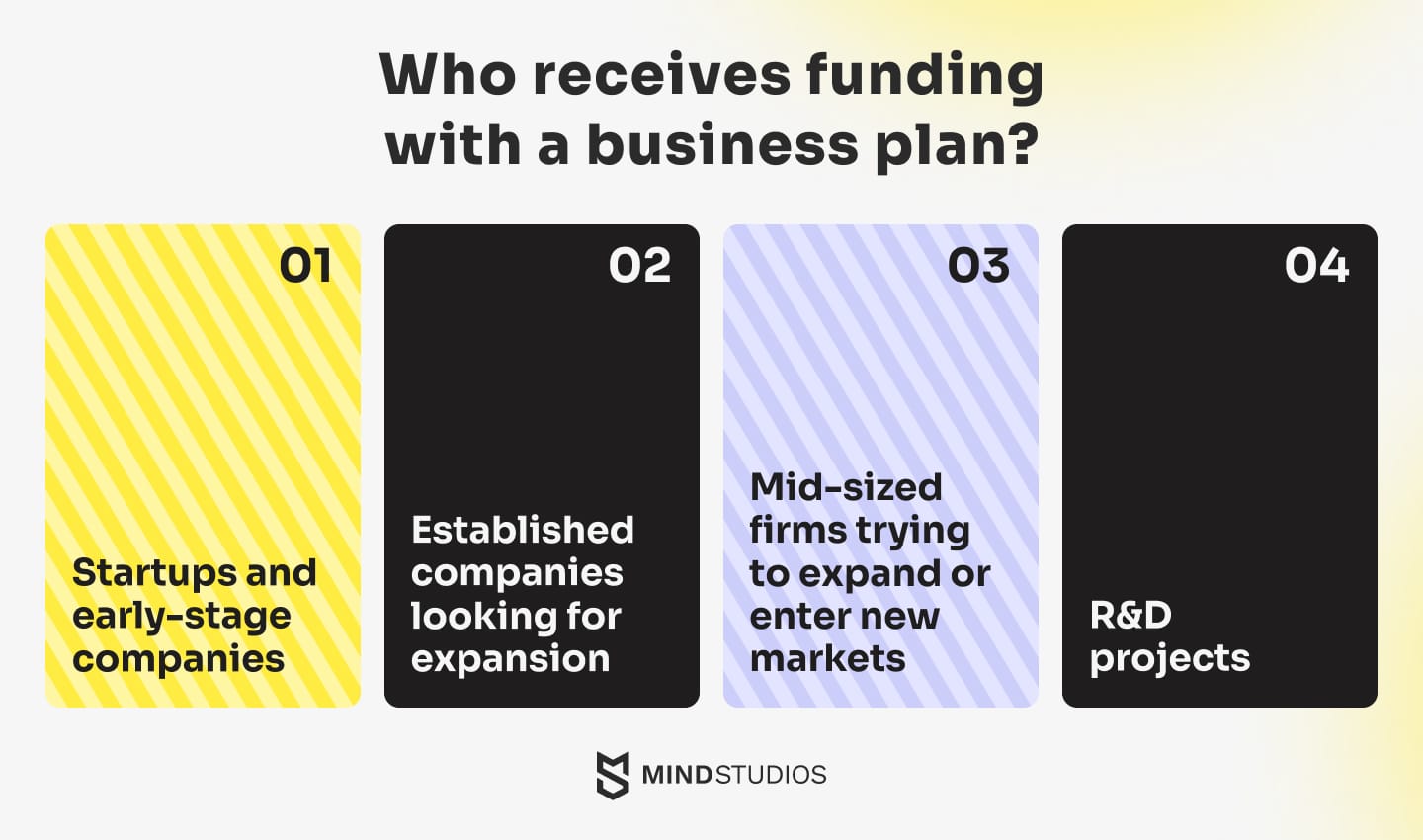
- Startups and early-stage companies
- Established companies looking for expansion.
- Mid-sized firms trying to expand or enter new markets.
- R&D projects
In 2023, worldwide venture capital investment in software development totaled around $85 billion.
Likewise, in 2023, the average deal size for VC-funded software businesses was approximately $8.5 million.
As for crowdfunding, in 2023, Kickstarter software development projects raised over $120 million, with the average campaign raising about $25,000.
It is important to remember that a business plan is, first and foremost, an internal document essential for the successful administration of your company.
A company strategy can help business owners to:
- Assess the market environment and the strategic positioning of their business.
- Make informed decisions.
- Have a strong plan they can refer back to to evaluate success.
- Significantly increase the odds of receiving funding.
What should a business plan include?
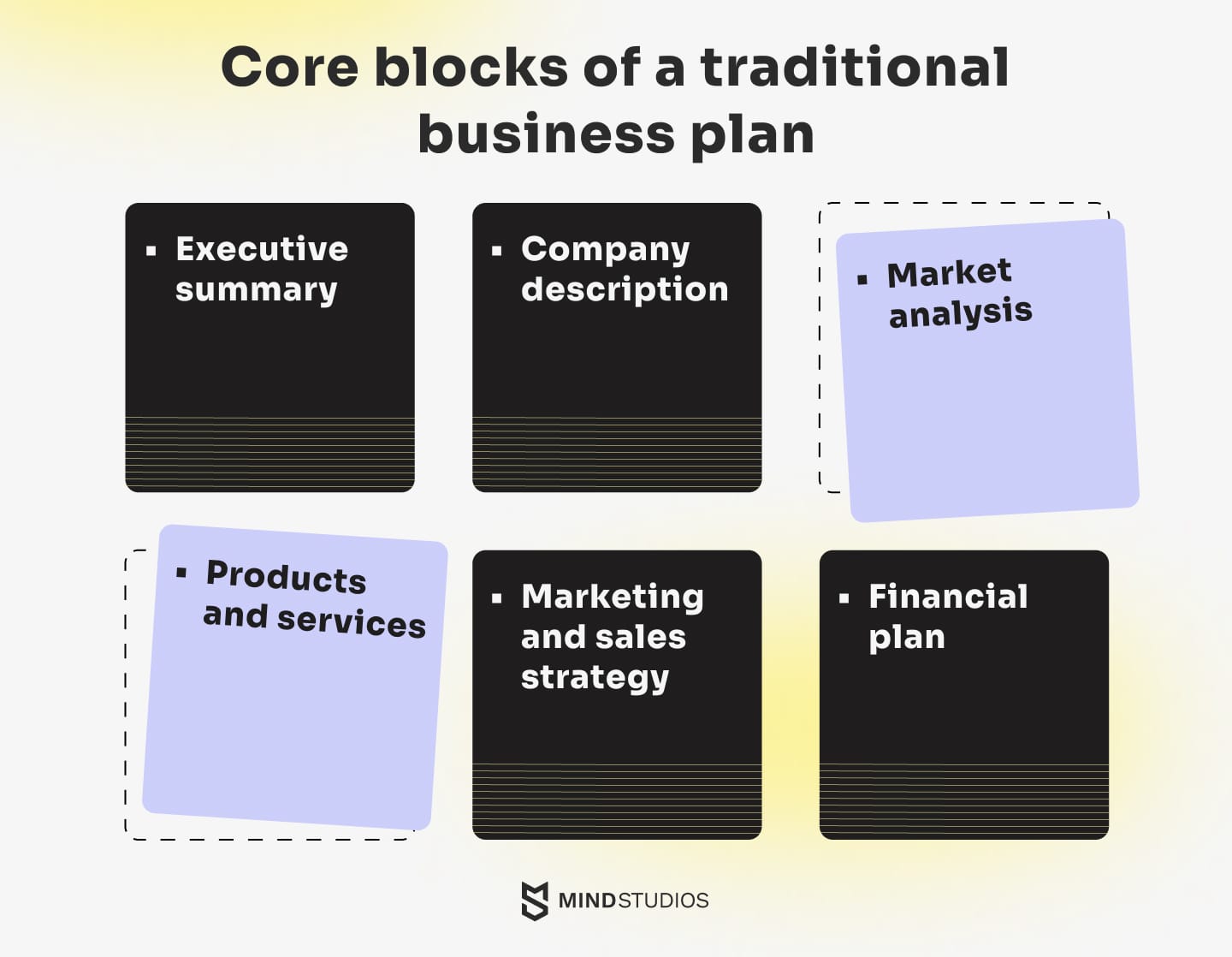
Let's take a closer look at what a business plan actually includes. Despite the fact that there is no universally accepted standard or order of items for describing a business plan, there are several common components that will answer the majority of the questions that investors will have, such as:
- Executive summary
- Company description
- Market analysis
- Products and services
- Marketing and sales strategy
- Financial plan
Executive summary
This is the first and most important part of your mobile app business plan because investors will read it first. Although it is first on the list of sections in a business plan, you should write it after finishing all the other parts, since it will serve as a summary of an existing plan.
The executive summary should be brief and not go too deep into how your product works. Instead, in this section, you should briefly describe your business, the niche you aim to fill, your target customer, and your application's unique solution (or a service you want to provide).
Make your pitch unique to set your company apart from the competition. Highlight your idea's unique value proposition. This proposition should clearly describe your mobile app's unique benefits and features, stressing how it stands out. To further differentiate your product, play up your company's capabilities, such as new technology, great team knowledge, and strategic relationships. Remember that a well-defined, distinctive value proposition is critical to persuade investors and stakeholders of your company's potential for success.
Determine your objectives. You need to set clear and attainable goals, since investors will evaluate your goals for suitability. In this phase, your exit plan's goal must also be determined. A business owner must plan to 'leave' the business through exit planning. An exit can take several forms, including selling all or part of the company, merging it with another, passing it to a family, or listing it on a stock exchange through an IPO.
You should list funding needs and how the funds will improve your company's appeal. An effective startup business plan for mobile app success must include maximum transparency at each stage.
Make your document convincing. To do this, keep your product's concept and goals consistent throughout the paper. Give your reader accurate data and realistic project expectations. Make sure the business plan and executive summary creator's name and your team members' names are consistent throughout the documentation.
Company description
After the executive summary, we recommend creating a company description. In this section, describe your company's history, mission, and the values that inspire you and your employees. If you have a tech partner or an outsourcing company, you should include it, as investors would want to know about and understand your staff's skills and experience.
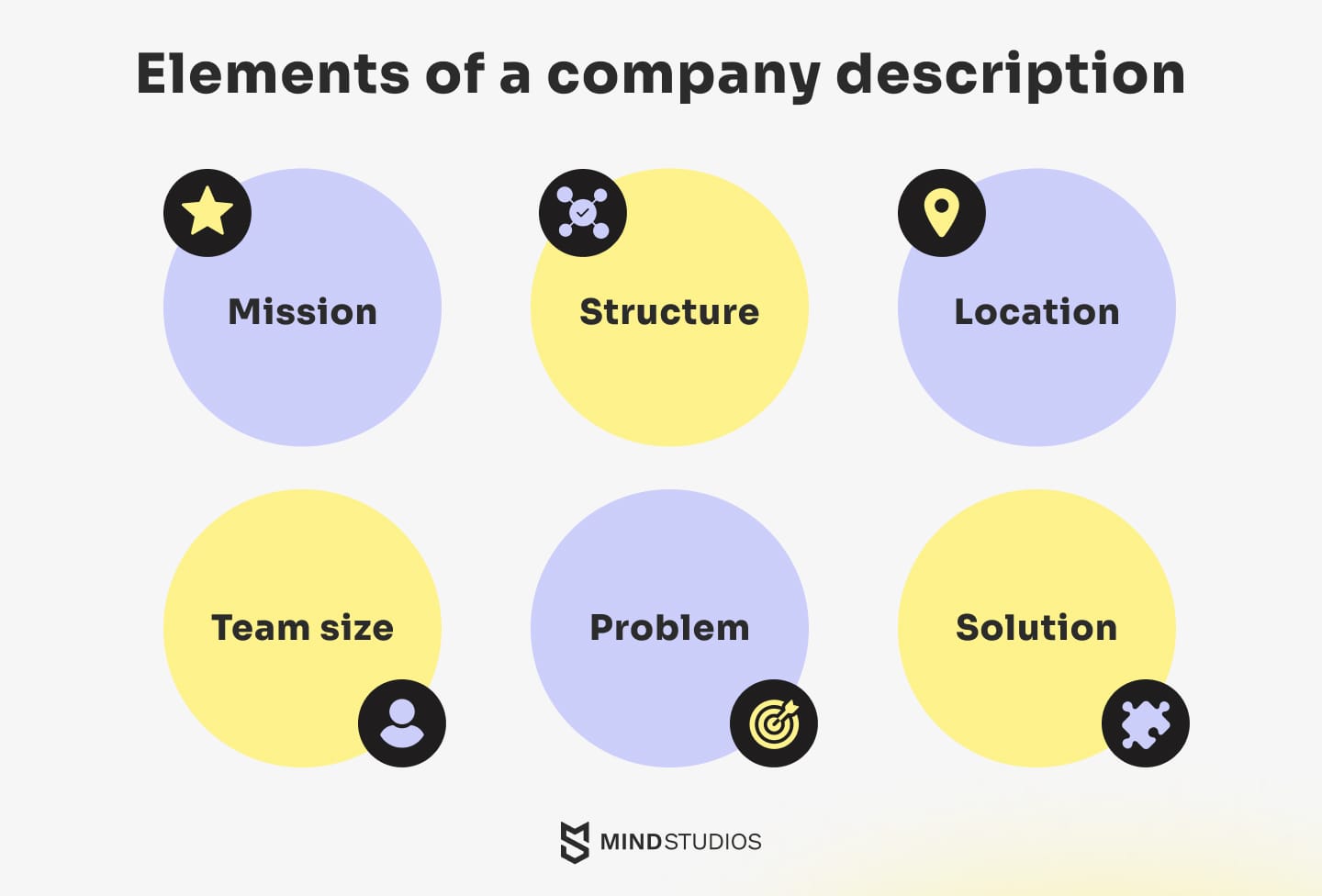
Although it may sound basic, it is important to ensure you provide further details about your team, such as the number of team members, their names, job titles, etc.
The mission statement should describe the purpose of your company and the fundamental principles that guide your business. After establishing your mission, outline the primary challenges and the solutions to them that your startup can offer.
Market analysis
In this business plan section, assess the current and projected market conditions. Similarly, emphasize the approximate market share you are targeting. You should be aware of the present situation in your industry, have up-to-date information, and be able to generate a short-term forecast.
Mind Studios tip: The TAM/SAM/SOM definition is a great resource for analyzing the market. You can learn more about them in our article How to Do Market Research for Startups.
When creating a business plan for app development, we recommend that you treat it as a business in general rather than just a mobile application. However, some differences exist: mobile apps are usually presented in app stores (AppStore and Google Play are the most popular ones). Therefore, most of your market study operations will be focused on them. Research your competitors and carefully read reviews for negative feedback - they will provide you with vital information about what competitors are not doing efficiently so far, which you may use to your benefit.
Your goal is to assess whether there’s a real market for your product, whether there are enough customers in the market, and whether those customers are willing to pay money to use your product.
Products and services
Here you can highlight your product's unique selling points and provide more information about it (you can also mention your startup business proposal). If you were advised to keep things concise in the Executive Summary, now is the time to paint a more in-depth picture of your services or products for the readers.
Mind Studios tip: When marketing a mobile app, it's important to be explicit about its value and the problems it solves. Learn how to differentiate yourself from the competition by taking advantage of the possibilities presented by mobile apps. Mind Studios has an extensive background in developing mobile apps, and we would gladly consult you with any questions you may have, so feel free to contact us.
Marketing strategy and sales strategy
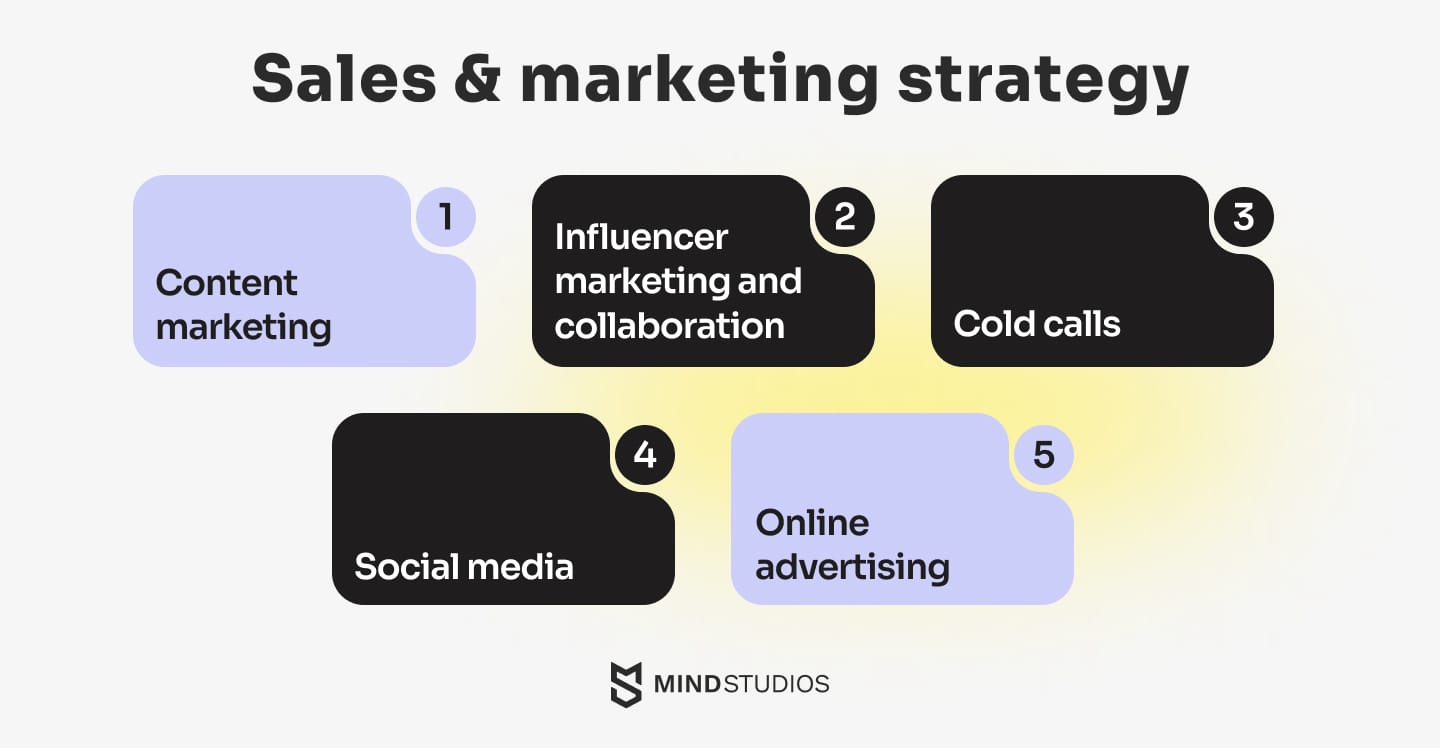
This part of the document should detail your product promotion strategy goals, checklist of objectives, and projections. Your knowledge of marketing your product or service is more valuable than the product or service itself.
A successful marketing plan helps acquire and retain new users, so it should also include the channels you want to use to attract customers and the funding you need for that purpose.
- Content marketing
Content marketing is a good way to develop and share valuable, relevant content to attract and engage your target audience. This can involve blog posts, videos, infographics, and social media updates tailored to your target customer needs and interests. When done right, quality content can establish your company as an industry leader and bring organic traffic to your app. - Influencer marketing and collaboration
Partnering with influencers with a large following in your niche can help you expand your reach and reputation. Influencers may generate attention for your app through reviews, tutorials, and endorsements. Collaborating with them helps you tap into their existing audience, potentially converting their followers into app users. - Cold calls
Cold calling, while more conventional, could still be a successful tactic, particularly in the B2B sector. Directly reaching out to potential clients allows you to tailor your presentation, solve individual requirements, and create important connections. Cold calls can also give rapid feedback and highlight areas for growth. - Social media
Social media networks such as Facebook, Instagram, Twitter, TikTok, and YouTube are effective tools for connecting with your audience. Regular articles, engaging stories, and live sessions help boost app awareness and build a community around your company. Social media also enables tailored advertising to reach specific demographics. - Online advertising
Online advertising, such as Google Ads and social network ads, can increase traffic to your app. Paid campaigns are highly personalized, allowing you to reach potential consumers based on their interests, habits, and demographics. Investing in online marketing may quickly increase your app's downloads and user base.
Marketing budget forecast
It is also important to set a reasonable budget for your marketing efforts. Depending on your client acquisition strategy, consider the costs of content development, influencer collaborations, social media management, internet advertising, and a specialized sales crew for cold calling. A well-planned budget should incorporate initial launch charges and continuing costs for sustained engagement and user acquisition.
Anticipated growth results
Lastly, setting attainable user acquisition and retention targets can help you measure the effectiveness of your marketing activities. Analyzing market trends, competition strategies, and historical data can help you predict growth results. Regularly analyzing and revising your plan based on performance metrics ensures long-term growth and adaptability in a competitive market.
Mind Studios tip: Advertising a mobile app frequently follows the same rules for any other kind of product. But there are a few subtle tactics that you can use as well. To illustrate the point, mobile app markets are interested in promoting new solutions. As a result, they subtly boost app traffic for the first day.
Before releasing your app, verify that it has undergone thorough testing, is ASO optimized, and has received positive reviews. This approach can give you an early advantage and keep you going strong even after the first 24 hours. It will be easier if you target the best possible reviews right from the start.
If you have any further questions about marketing your product or service correctly, contact us for a free consultation, and our business analyst team will be happy to help you.
Financial plan
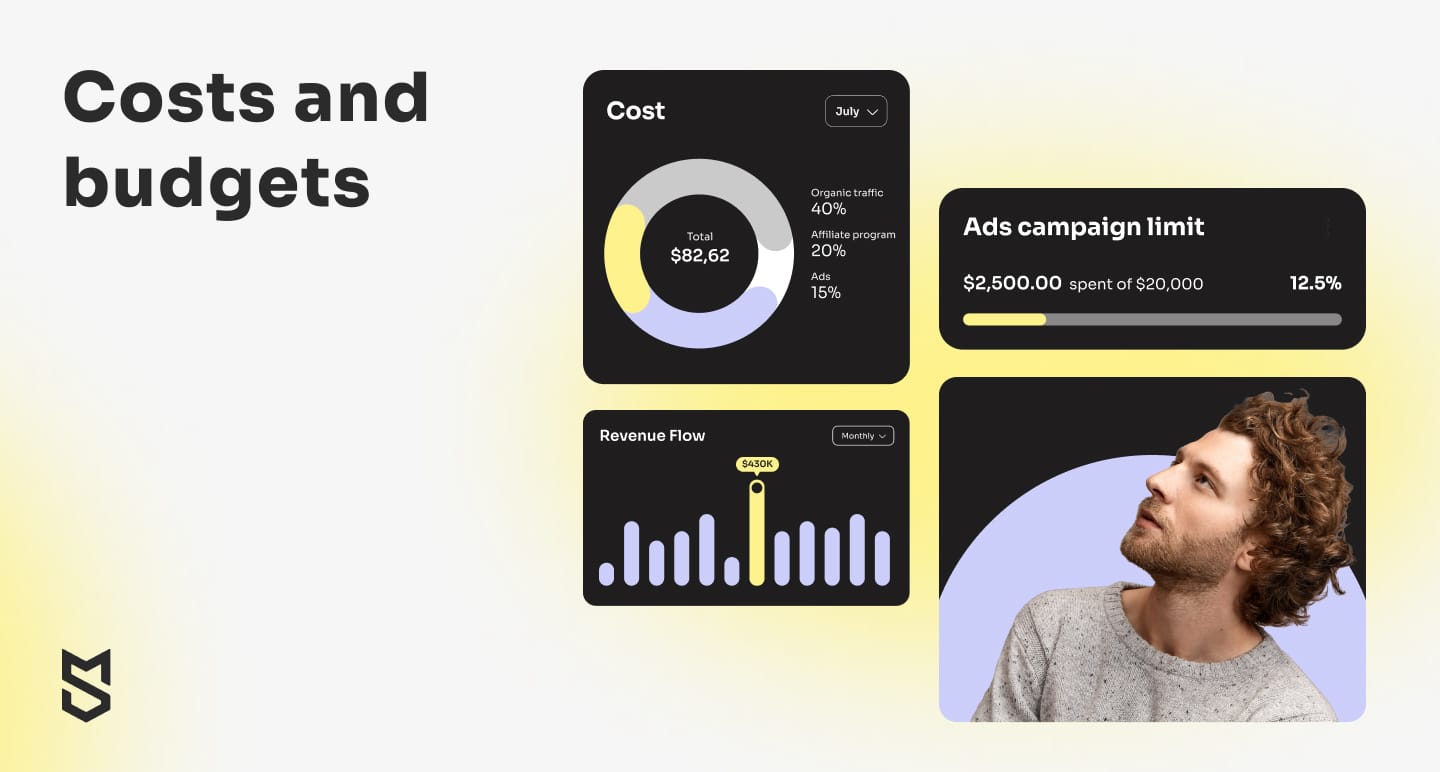
To correctly set up this part of your business plan, you should clearly understand what kind of financing you need to move forward. Moreover, you need to express it as clearly as possible to be sure a potential investor will also understand what funding you need.
The financial model typically consists of a three- to five-year prediction of all key forecasted indicators, such as profit and loss, cash flow, balance sheets, start tables, unit economics calculations, and your app's projected revenues and costs. To accurately estimate the actual cost and distribution of assets, your financial record must include all these elements, each with a clear explanation.
Startup costs and funding required
Inform your investors about estimated costs. Since these numbers fluctuate, we recommend making reasonable estimates and leaving room for extra expenses.
Designate all types of costs:
- One-time costs (e.g. relocation costs, costs for obtaining an office space, equipment, servers, software, licenses)
- Fixed costs: they remain unchanged regardless of whether you produce something or not (e.g. rent, insurance, lease payments, fixed salaries)
- Variable costs: costs that change according to the production volume (e.g. wages)
Mind Studios tip: When establishing a budget, the expense of designing and developing the app for mobile devices is a major component. Many factors go into this price tag, including the team's budget, the technology selected, and any necessary third-party services or libraries, among other factors.
Don't hesitate to contact us if you have difficulty figuring out which library or combination of tools would be ideal for developing your idea; our experts will assess your concept and recommend the best course of action.
Estimate your marketing budget
You may estimate the cost of marketing services based on the market analysis you outlined in the preceding section of your business plan. Understanding the marketing budget is essential to all parties: you, as the app owner, investors, and other stakeholders.
Landing page creation
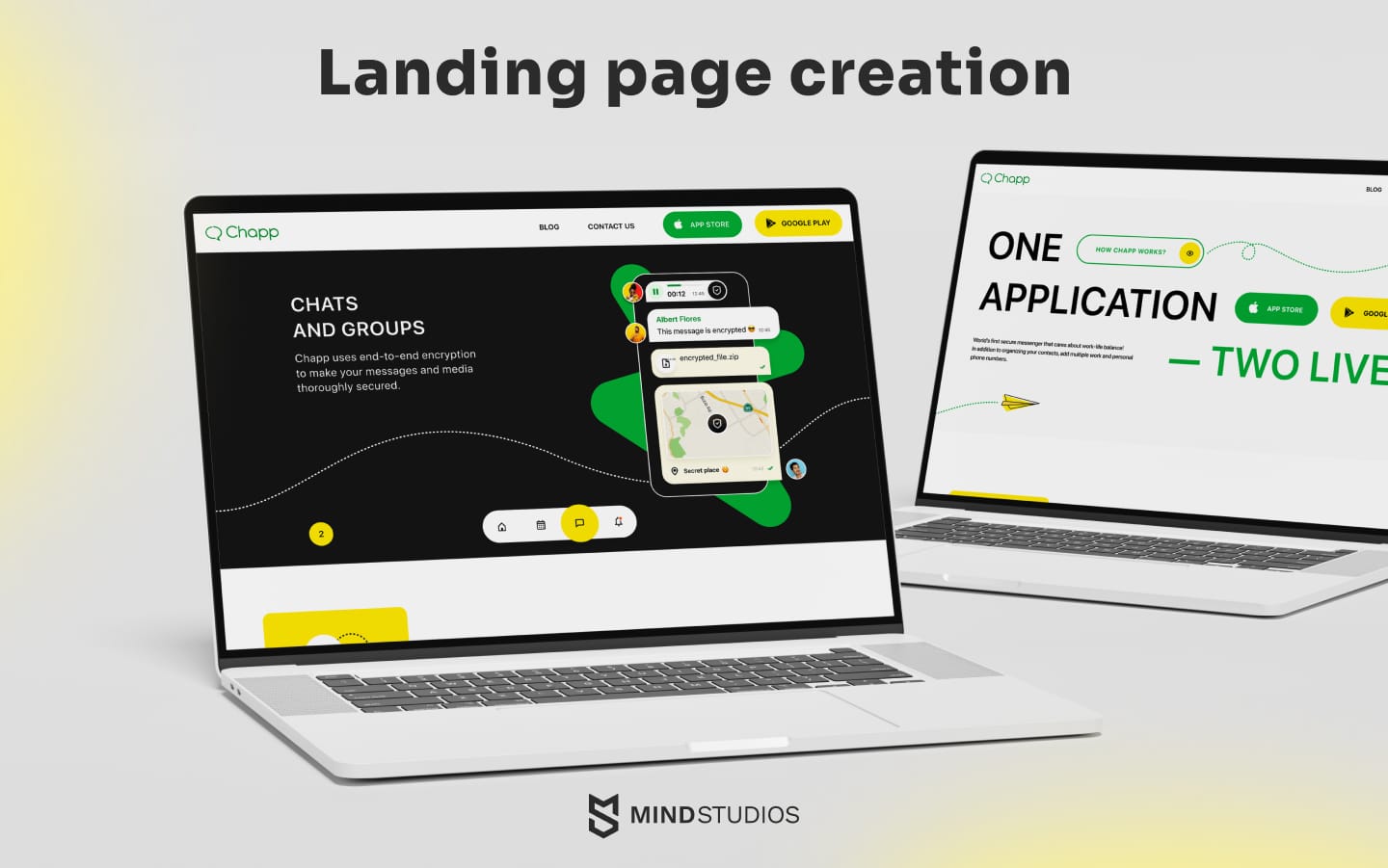
- Estimate costs for design and development.
- Include expenses for hosting and domain registration.
- Allocate funds for content creation, including copywriting and promotional videos.
- Budget for A/B testing tools to optimize content and design.
- Plan for analytics tools to track visitor behavior and campaign performance.
Website and blog launch
- Budget for website design, development, and maintenance.
- Include costs for hosting, domain registration, and SSL certificates.
- Plan for SEO services to optimize blog articles for better promotion.
- Estimate expenses for regular updates and content management.
Product launch type
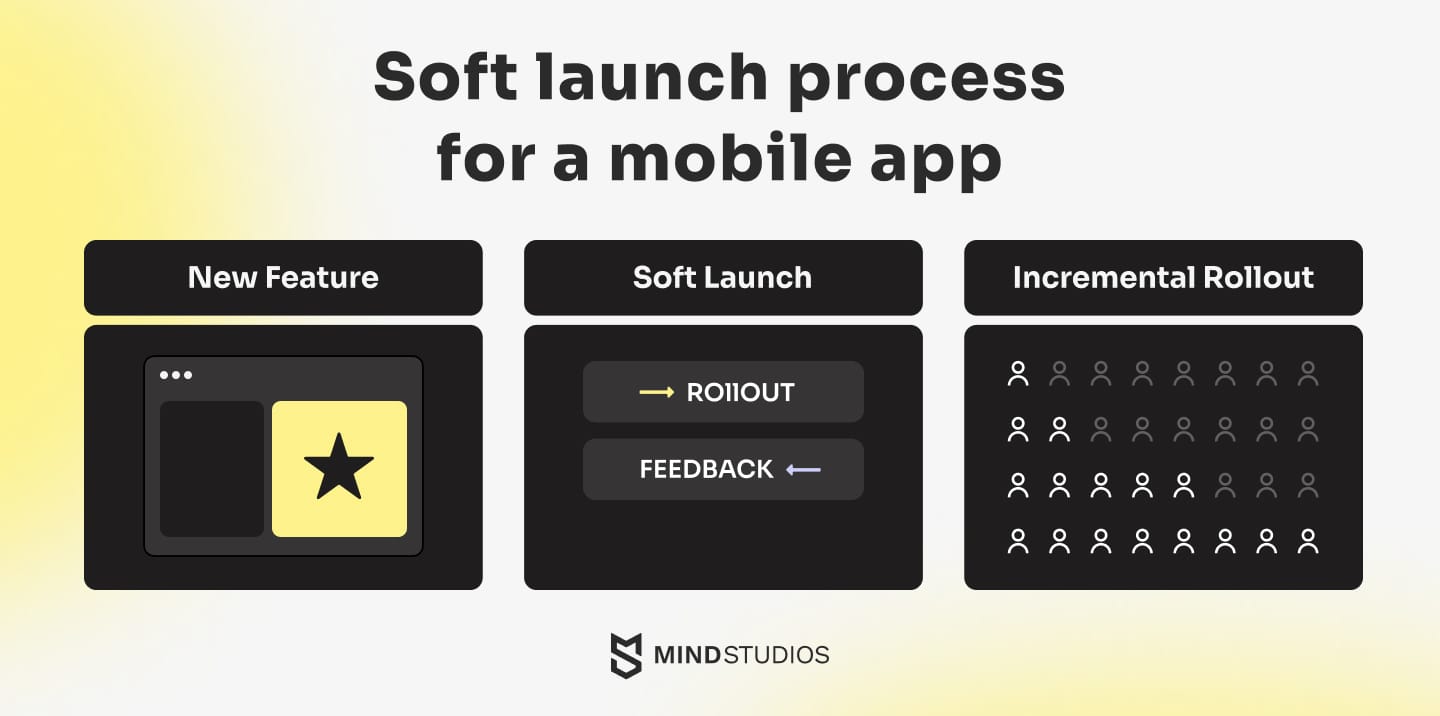
Hard launch:
- Include costs for marketing campaigns targeting the entire audience.
- Budget for customer support and potential bug fixes post-launch.
Soft launch:
- Estimate expenses for releasing an MVP or full version with onboarding screens to a limited audience.
- Include costs for monitoring and gathering feedback for further improvements.
- Plan for incremental marketing expenses as the product is gradually introduced to a larger audience.
You may also be curious about the general cost of developing an app.
Monetization strategy
It is another section you need to add to your mobile app business plan. By illustrating your monetization model, you’ll demonstrate to your investors and other stakeholders that your project will be profitable and provide a return on investment with positive unit economics. It will also help you ensure your startup reaches its break-even point.
The most common ways to monetize an application are:
- Advertising (this model allows you to monetize your apps by displaying advertising to users through app ad networks, which use algorithms to deliver high-quality ads in real-time)
- Charging for the application (if your business model describes a paid application, you need to convince the consumer why they have to pay and what they’re paying for)
- In-app purchases (this is a widespread mobile app business model in iOS and Android applications)
- Subscriptions (this model of monetization is quite popular as well; in most cases, subscription apps have a free trial period)
Break-even point analysis
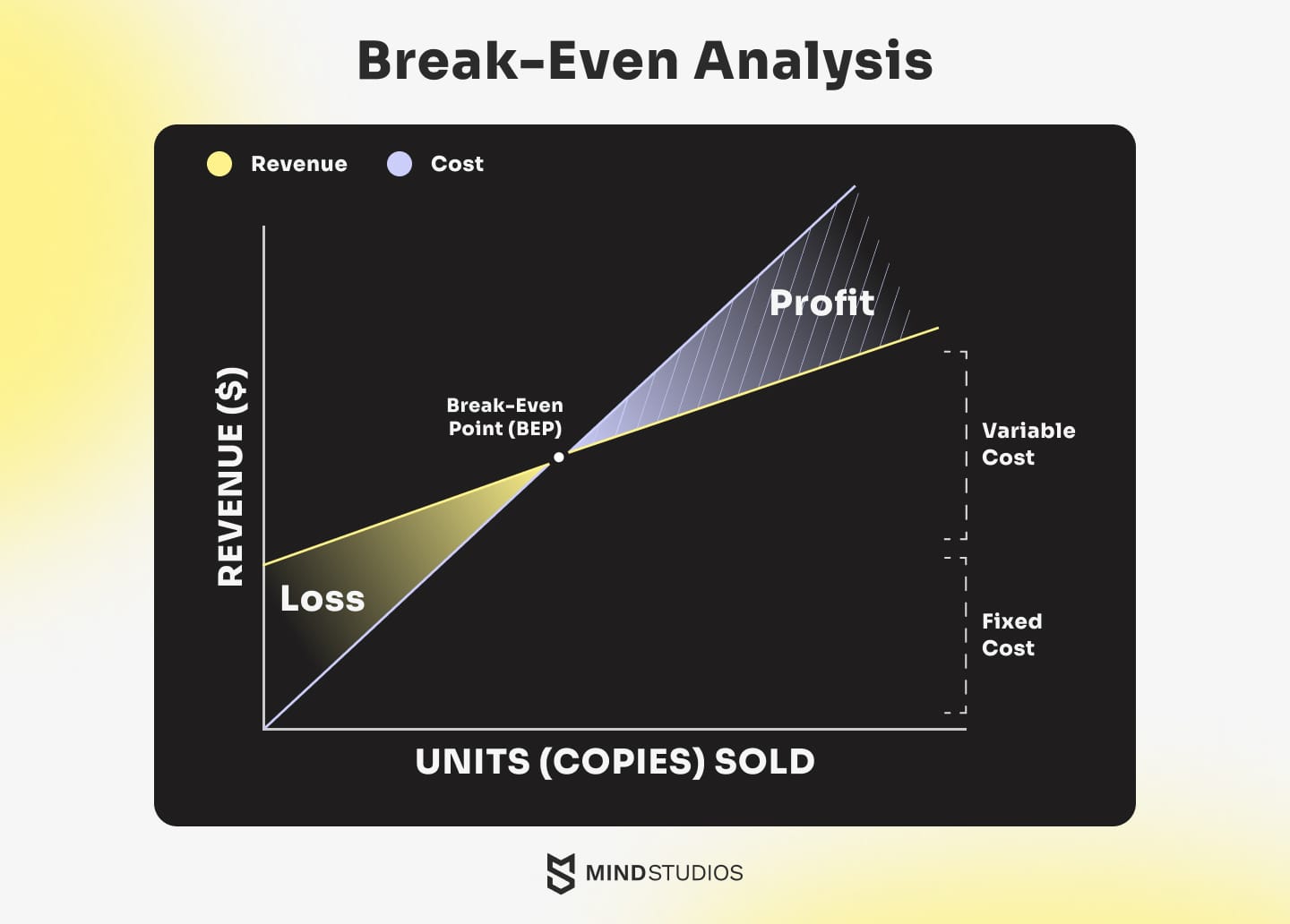
The break-even point is when total cost and revenue are equal, indicating that your business will not lose or earn money. In other words, you've reached the point where development or manufacturing expenses match product revenue.
This is a critical calculation to include in a fresh app business plan. Potential investors want to know the expected return on their investment and when they will see that return. Some businesses might take years to earn a profit, often losing funds for the first few months or even years before breaking even. As a result, the break-even point is a critical component of every business plan given to a prospective investor.
This can be useful for established businesses to examine costs, estimate earnings at various sales levels, and demonstrate potential recovery after unexpected or disaster scenarios.
How does Mind Studios help customers in creating a business plan?
At Mind Studios, we understand that a robust business plan for an app is crucial for the success of any software or mobile app project. The discovery process in software development is a critical initial phase that aims to thoroughly understand the project requirements, align stakeholders, and establish a solid foundation for subsequent development stages.
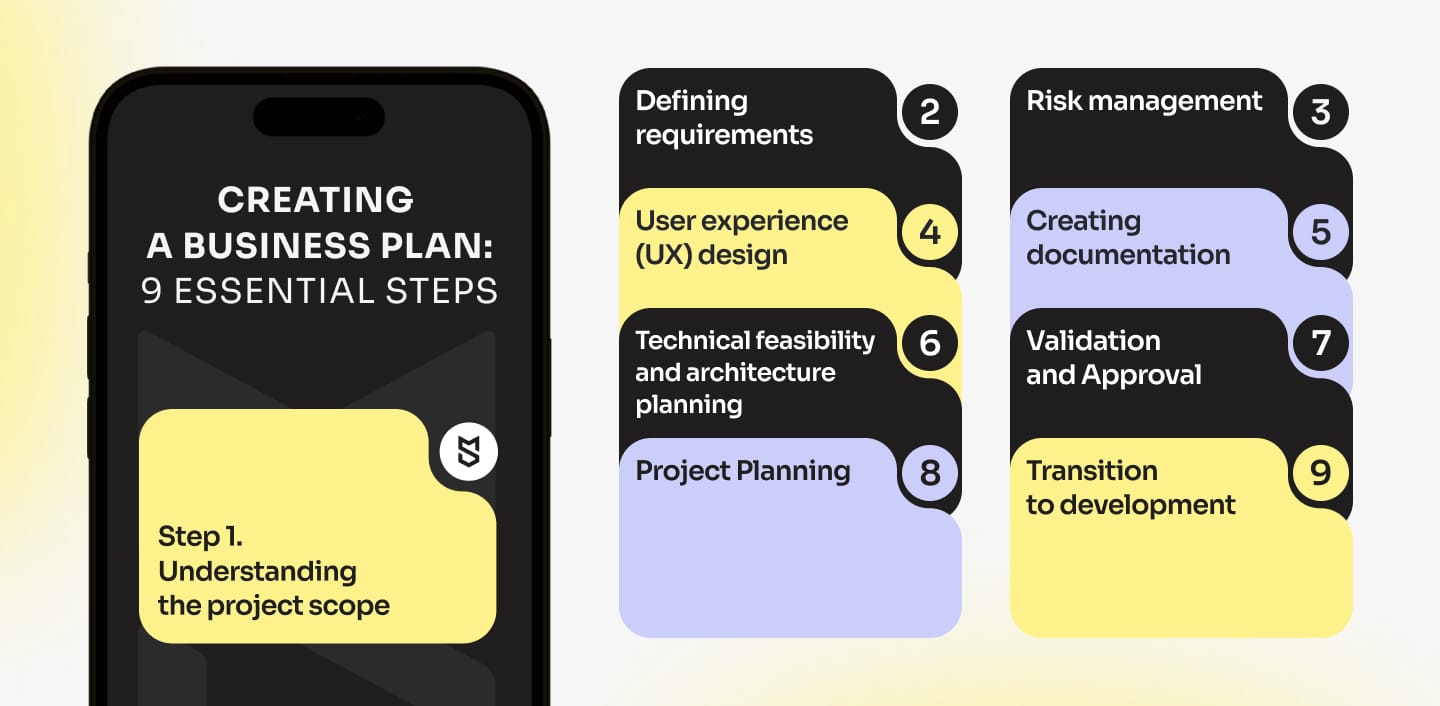
Our comprehensive discovery phase is designed to help clients create a business plan for a mobile app that is both detailed and effective. Here’s how we assist our clients through this process:
#1. Understanding the project scope
Stakeholder interviews: We engage with clients, end-users, and key stakeholders to gather in-depth insights into their needs, expectations, and pain points. This helps us understand the project’s vision and goals.
Market research: Our app development team conducts thorough market research to analyze competitors, identify industry trends, and uncover opportunities and threats. This research is essential for positioning the project effectively in the market.
#2. Defining requirements
Functional requirements: We work closely with clients to detail the software’s features and functionalities through user stories and use cases. This ensures that all necessary aspects of the project are captured.
Non-functional requirements: We define the quality attributes of the software, such as performance, security, and usability, to ensure a comprehensive understanding of the project’s requirements.
#3. User experience (UX) design
User persona creation: Our UX experts develop profiles representing key user groups, helping us understand user behaviors and needs.
User journey mapping: We visualize the steps users will take to achieve their goals within the software, identifying potential pain points and areas for improvement.
Wireframing and prototyping: We create low-fidelity wireframes and interactive prototypes to validate design concepts and ensure alignment with client expectations.
#4. Technical feasibility and architecture planning
Technical assessment: Our technical team evaluates the feasibility of proposed features, identifying potential challenges and risks.
Architecture design: We define the system architecture and select the appropriate technology stack, laying the groundwork for a scalable and robust solution.
#5. Project Planning
Project roadmap: We outline a detailed project timeline, including key milestones and deliverables, to ensure a clear path forward.
Resource allocation: Our project managers define the project team, allocate roles and responsibilities, and estimate the budget.
#6. Risk management
Risk Identification and analysis: We identify potential risks and analyze their impact, developing mitigation strategies to address them proactively.
#7. Creating documentation
Requirement and design documentation: We compile detailed functional and non-functional requirements, along with design documents.
Project plan: We create a comprehensive project plan that includes timelines, milestones, resource allocation, and risk management strategies.
#8. Validation and Approval
Review sessions: We conduct review sessions with stakeholders to present our findings, gather feedback, and refine the project scope and plans.
Approval: We obtain formal sign-off from stakeholders, ensuring everyone is aligned and ready to proceed to the development phase.
#9. Transition to development
Kick-off meeting: We align our development team with the project goals and plans, ensuring everyone is on the same page.
Setting up environments: We establish the necessary development environments and set up continuous integration pipelines to support efficient development.
Our thorough discovery phase ensures clients have a well-defined app business plan, setting the stage for a successful software or mobile app development project. Contact our business development team anytime if you need assistance crafting a comprehensive business plan that secures funding.
Business plan example for a mobile app startup
So, what exactly does a business plan for a mobile app look like? Below is an example of a business plan we created for demonstration purposes. So, if you want to know exactly how to write a business plan for an app, you can take a look at our example. Although this mobile app business plan follows all the rules, the calculations are entirely fictional and may not apply to your plan.
We also provide a mobile app marketing plan template to complement our business plan, ensuring a strategic approach to promoting your app in the competitive market. This template includes up-to-date techniques for 2024, guiding you through effective advertising and user engagement strategies.
Download the free PDF app business plan template for a mobile app here
No matter which one you decide to create, a pre-written mobile app business plan can help you seamlessly navigate through the development process with its four fundamental stages: discovery, idea validation, design, and actual development.
Conclusion
Writing a mobile app business plan, especially the first page, is challenging. Many beginner entrepreneurs rush to download a free business plan from another company, mistakenly believing someone else's business strategy will help them succeed. It won't!
A detailed business plan that describes your company and mobile app justifies the use of funds, and addresses legal issues can help you build stakeholder trust. At Mind Studios, we suggest reviewing your app's business plan annually. This will help you meet user needs and assess progress. Refreshing a business plan regularly helps you track startup finances while developing smart investment strategies. In short, this document adapts to your startup.
Last but not least, business plans cannot be copied. They must be unique and show your enthusiasm for implementing your idea. Ensure your business plan shows its viability and profitability, since higher viability means more investment potential.

